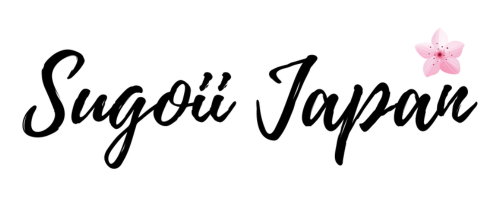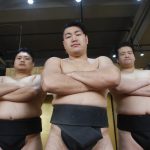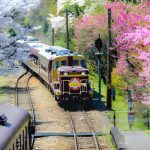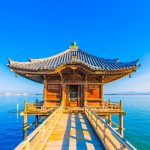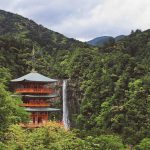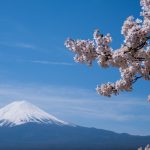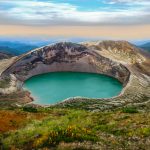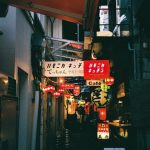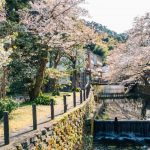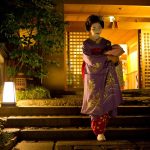One of the best things that you can do for yourself whilst traveling through Japan is organise to attend a Japanese festival – a matsuri. The Japanese are very traditional people who have steadfastly held onto their festivity celebrations from many centuries ago.
Whilst they’ve grown as a nation to become one of the leaders of new-age technology and cultural innovation, they welcome the changes year on year whilst still making sure that they hold onto their roots, and this is an incredibly warming, humbling, and joyous thing to witness. Aside from that, many annual matsuris have newly arisen over the year that the Japanese people have welcomed with open arms and will continue to celebrate for years to come.

Whilst you may have heard about some of the bigger festivals already, such as the Kyoto Gion Matsuri, the Sapporo Snow Festival, Osaka’s Tenjin Matsuri, and Aomori’s Nebuta Festival, there are actually hundreds of festivals that happen in Japan every year, from the larger cities with millions in their population, to the tiny, small villages with only a few hundred in residents.
Here, we’re going to list out the best of the best Japanese matsuri, month by month, so that you can have an idea of what’s happening during the time that you’re visiting and try to organise around that.
Japan Matsuri Festivals – January
Horan Enya, Takada

This festival occurs in Takada City of Oita Prefecture. On the 1st of January, every year, decorated boats are taken out into the harbour by the men in the community. They use this time to pray and wish for safety at sea in the coming year and abundance of successes in fishing. The culmination of this festival is when these men then dive into the ocean and swim to the opposite shore. You can imagine how cold it would be at this time of the year!
- Dates: 1 January
Tokiwa Hachimangu Toshina Hono, Fujisaki-machi

This happens on the 1st of January every year, where a line of men wearing only loincloths carry massive ‘toshina’, or thick rope that are big as 4.4 metres long, 2.3 metres thick and weighing up to 400km on their shoulders to the local Tokiwa Hachimangu Shrine. On the way, they all boisterously chant “Saigi, saigi, dohkoh saigi!”, whilst praying for safety and prosperity in the upcoming year. There is also a nabe soup competition that is a favourite addition to the festival amongst local shops and stallholders. This festival has an origin of over 350 years!
- Dates: 1 January
Joma Shinji Festival, Kamakura

This matsuri happens in the first week of the year in Kamakura. Here, you will see local participants dressed up in samurai warrior costumes, set up to shoot arrows at a 60cm target. The targets will have ‘oni’ written in Chinese characters on them, which translates to ‘demon’, and therefore with every successful arrow that hits the target, more and more demons are driven away for the year.
- Dates: 5 January
Shorin-zan Daruma-ichi, Takasaki
This is one of the most popular daruma doll festivals in the entire country. Although there are many daruma festivals occurring during this time of the year, this one is actually the largest ones. During this matsuri, thousands gather around throughout the day and during the night to pray for good luck. They will purchase daruma dolls as well.
- Dates: 6-7 January
Toshi-ya, Kyoto

During this festival, over 1,000 trained archers are set up to shoot arrows along the length of the famous Sanjusangendo Temple. This is a distance of more than 120 meters! This festival actually dates back all the way to the 1600s, when a samurai shot 51 arrows in record time for the first time there.
- Dates: 2nd Monday of January
Nozawa Dosojin Himatsuri, Nozawa Onsen
25 and 42 are both considered unlucky ages in Japan, so during this famous fire festival, a 65 foot shrine is built by men of those ages only is burnt as a purification ritual to prepare them for the ‘bad luck’ in the coming year. They will then consume copious amounts of sake, and to finish off the matsuri, the 25-year olds will then arm themselves with pine branches and defend the shrine against the older men who will wield torches lit from the bonfire.
- Dates: 15 January
Japan Matsuri Festivals – February
Sapporo Snow Festival (Yuki Matsuri), Hokkaido

This is the biggest and most popular snow festival in all of Japan. It’s located on the northern island of Hokkaido, and garners lots of attention leading up to and during the week that it is held. The highlight of this festival is definitely the snow statue competition that is held along Sapporo’s main strip. Artistic teams from all over the world fly over ahead of the festival to carve out their masterpiece in time for the opening of the event.
- Dates: Early February
Kaki Matsuri, Hiroshima Prefecture

This is a unique festival which celebrates oysters! Throughout February, these small oyster festivals are held in various locations around Hiroshima and Miyajima Island as well as smaller fishing towns along the coast where you can join in the festivities and sample a wide range of oysters and other fresh seafood.
- Dates: Throughout February
Otaru Snow Light Path Festival, Otaru

This is a slightly smaller scale Sapporo Snow Festival, held in Otaru which is nearby to Sapporo City. It also offers an impressive display of snow sculptures to marvel at, however, it’s main point of attraction is that the festivities are set up all along the historic Canal of Otaru. The reflections of the candles and lanterns lit up at night in the water is quite a sight!
- Dates: Early February
Snowball Festival, Uonuma
This is a unique addition to the list! Hosted in Niigata every year, this particular snowball festival is pretty much a free-range fancy dress party that culminates in a snowball fight in the town of Koide. If you’re lucky, you’ll experience quite a few random costumes, some completely inappropriate for winter but as hilarious as they come! Imagine cat costumes and alike. Stalls here sling out sake like it’s water so be prepared for some epic fun.
- Dates: Mid February
Setsubun Festival, Kyoto
Setsubun means the day before the beginning of spring in Japan. This ‘division of the seasons’ is actually a big thing in this country, and thus you will actually witness a Setsubun matsuri across many areas of Japan.
In particular, Kyoto is a region that hosts multiple Setsubun festivities all at once. For example, from 10:00am, there will be arrow-shooting and bean-throwing (a Setsubun Matsuri staple) at the main hall of Shimogamo Jinja. At 1:00pm, there will be a celebration at the Shogo-in Temple in Kyoto.
From 3:00pm, there will be more bean-throwing and the distribution of charms by men dressed in Heian Period attire at the Sugar Shrine in Kyoto. There is also a large purification fire lit at the Yoshida Shrine in the evening of the 3rd, a major bean-throwing festival at the head temple of the Shingon Buddhist sect, and even a competition involving around 300 one-year-old babies sitting opposite each other whilst someone tries to surprise them into crying (FYI, the first baby to cry is the winner!).
During Setsubun, you will also be able to see a lot of Japanese masks representing Oni (demon in Japanese).
- Dates: 3 Feb
Asahikawa Fuyu Matsuri, Asahikawa

If you’re one to brave arctic temperatures, this festival is actually one of the most beautiful you’ll experience. Massive snow sculptures which light up in colourful lights at night makes for a wonderful picture opportunity, and because of its remote location, there will unlikely be any crowds.
- Dates: 7 – 11 February
Saidaiji Eyou Matsuri, Okayama

This is one of the most bizarre festivals you may come across. You will witness nearly 10,000 men wear only a modest loincloth to purify their body. After that, they will all fight to gain possession of a pair of ‘shingi’ (sacred sticks) which will ultimately grant the winner a year of good luck and happiness. Once the shingi is thrown from the temple, all hell breaks loose!
- Dates: Third Saturday of February
Japan Matsuri Festivals – March
Todai-ji Shunie, Nara
This is an incredible festival of fire versus water. A fire ceremony is held every evening from 6:00pm, where you will witness long fire torches being swung around to ward off any evil. The festival culminates at 2:00am on the eve of the last day, when water is transported from the historic well and offered to festival visitors.
- Dates: 1 – 14 March
Konomiya Hadaka Festival, Konomiya Shrine
If you’re down for a bit of fun, we recommend trying to attend this matsuri! A massive number of men who are around the 42-year-old mark will dress up in a loincloth and play a game. There will be one chosen ‘shin-otoko’, who will be butt-naked, that the men need to try and tag before he gets to Konomiya Shrine. The idea is that if they tag him, they will pass off any of their bad luck and ill-fortune to him. The atmosphere of this festival is sometimes pure madness and it’s definitely something fun to watch.
- Dates: Late Feb to Early March (January 14th Lunar Calendar)
There’s another “naked festival” in Hida Furukawa and you can get more info about it here: Hida Furukawa.
Honensai Matsuri, Inuyama

This has got to be the most bizarre festival ever! For an entire day, the population of Inuyama in Aichi Prefecture worship the human phallus. A freshly carved 3 metre wooden phallus is paraded around the area of Tagata Shrine, infertile couples will use the opportunity to pray for a child by touching the phallus structure, and sake is obviously free-flowing
- Dates: 15 March
Japan Matsuri Festivals – April
Miyako Odori, Kyoto

This is a much anticipated annual event that draws massive attention to the geisha culture of Kyoto. Every year, the Kobu Kaburenko Theatre in Kyoto hosts an incredible and glamourous performance by the Geiko of Kyoto to showcase their skills and talents in dancing and musical instruments. Tickets need to be booked in advance (like, way in advance!)
- Dates: 1 – 30 April
Onbashira Festival, Suwa
To witness this festival is something to held in high regard. It’s not something that many foreigners are aware of, and unfortunately participation is strictly limited to locals only, however, that’s not to say that seeing it first hand will be any less impressive. The Onbashira Festival happens every six years in the Year of the Tiger and Year of the Monkey. The next festival will be held in 2022, Year of the Tiger. Over the course of a month (from April until May), you will witness the giant fir trees being yanked from the forests and hauled through the freezing waters to town.
There will be an event where local men wearing only Japanese happi-coats will actually ride the huge logs down the steep slopes in Shimosuwa. As fun and exciting as that sounds, there have been some recorded deaths over this event, thus the ‘locals only’ rule. This first part of the festival is called ‘Yamadashi’. The second part, called ‘Satobiki’, is when the trees are paraded to the celebrated Suwa Taisha shrines.
- Dates: April – May
Beppu Hot Springs Matsuri, Beppu
This wholesome week-long festival exists to celebrate the wonderful onsens in Beppu, Oita. There will be parades, song and dance, lots of drums, plenty of foot stalls, marching bands, ‘mikoshi’ shrines, and even a large statue of a ‘tengu’ (Japanese monster creature) paraded through the streets. During this period, many hot springs offer free entry to visitors, so this is a great chance to explore as many as you can!
- Dates: 1st Week of April
By the way, if you are looking for amazing Japanese traditional inns in Beppu, check this out: Beppu Ryokan.
Kanamara Festival, Kawasaki
Similar to the phallus festival mentioned above, this one is actually named “Festival of the Iron Phallus”, and you can attend it if you’re staying near Tokyo in April! Every year, a 2 metre tall pink phallus statue is paraded through the streets, and couples will attend to pray for conception and good luck.
- Dates: Late March or Early April
You May Also Like: How To Use Shinkansen In Japan
Takayama Matsuri, Gifu
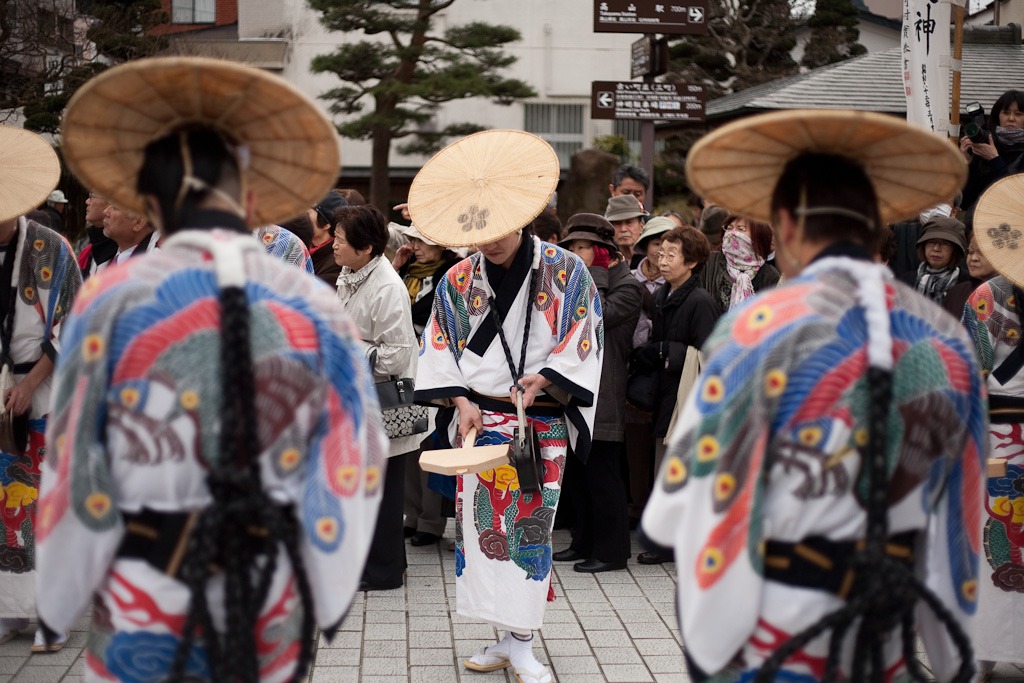
Easily considered one of the most beautiful festivals out there, the Takayama Festival is a springtime festival that sees traditional craftsmanship and artistic talent come together in harmony to produce some of the most intricately detailed floats you’ll ever lay eyes on.
The float designs will date all the way back to the 17th century! The major goal of this festival is to pray for a year of good harvest. This festival actually happens over two event periods – April and October.

- Dates: 14 – 15 April (and 9 – 10 October)
Japan Matsuri Festivals – May
Aoi Matsuri, Kyoto

For a good old-fashioned festival complete with parades and festival stalls, the Aoi Matsuri, also officially known as Kamo Festival, celebrates both Shimogamo Shrine and Kamigamo Shrine. During this period, you will be able to witness locals dressed in Heian Period clothing parading the streets.
- Dates: 15th May
Kanda Matsuri, Tokyo

A festival dedicated to the Edo era of Japan, the Kanda Matsuri is one of the most celebrated festivals in Tokyo. Every odd year (the next being 2021), Tokyoites come together to honour three deities: Daikokuten, Ebisu, and Taira no Masakado. Stunning shrines are paraded through the streets throughout the festival, flanked by dancers, drummers, and massive floats.
- Dates: Saturday & Sunday closest to May 15th (every odd year).
Sanja Matsuri, Asakusa
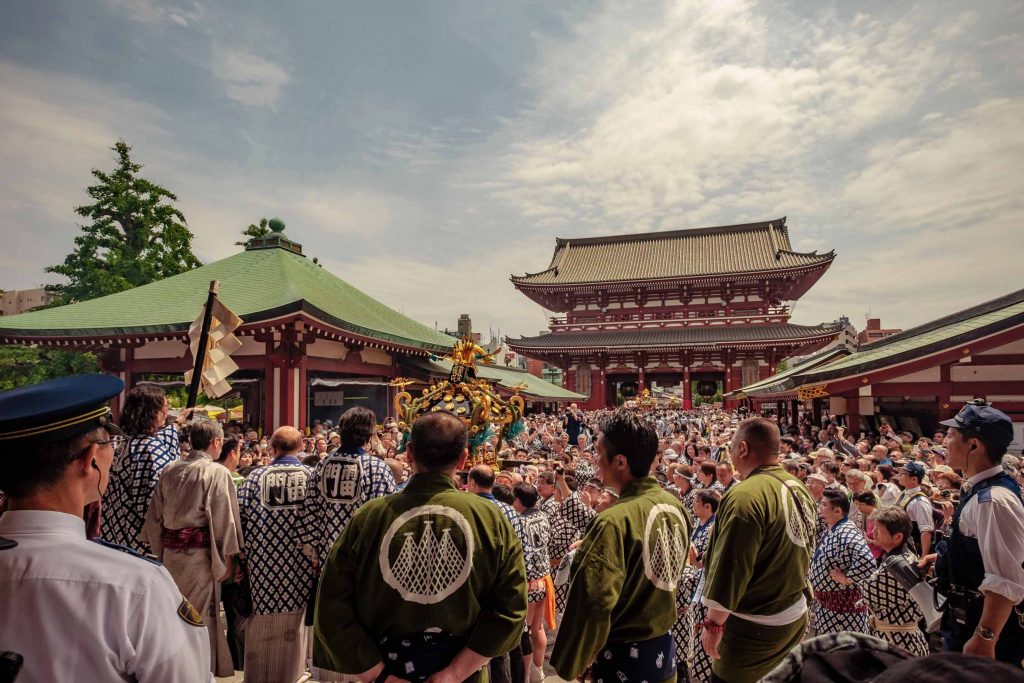
An annual matsuri which is held in Asakusa, it celebrates the three founding members of the famous Sensoji Temple. The festival is so big, it commands a crowd of over two million people over the course of three days.
For the duration of the festival, hundreds of mikoshi (portable shrines) are parade through the streets to bring good fortune to small businesses. On Sunday, the three large shrines that belong to Asakusa Shrine make their appearance.
This matsuri is also famous for seeing a lot of Yakuza (mafia members) who exhibit their tattoos during the festival.

- Dates: 15 – 17 May
Read More: 10 Interesting Facts About Yakuza
Japan Matsuri Festivals – June
Kaiko Kinenbi, Yokohama

This annual celebration of the opening of the Yokohama Port is one for the families. Over two days, you can witness fun boat races, parades, lots of loud live music, many dance performances by the locals, and even a temporary marketplace set up to sell souvenirs.
- Dates: 1 – 2 June
Izawanomiya Otaue Matsuri, Izawanomiya Shrine

One of the many rice-planting festivals of Japan, this particular one occurs at a sacred rice field. After the actual rice-planting procession, a ritual is performed by a group of men dressed in loincloths whereby they fight it out in a muddy paddy field to win charms that are attached to a tall bamboo pole.
- Dates: 14 June
Yukata Matsuri, Himeji

This is one of the most wholesome festivals there is in Himeji. Over two days, a parade of adorably dressed children in their summer yukata parade along Otemaedori (the main strip of Himeji) between the castle and the station. This is a different festival to most on the list, and of course, there will be plenty of food and souvenir stalls to check out along the way.
- Dates: 22 – 23 June
Japan Matsuri Festivals – July
Gion Matsuri, Kyoto
Arguably one of the most famous festivals in Japan, the Gion Matsuri is an absolute beast of a festival. It lasts for the entire month of July, features multiple flashy decorated festival floats, and literally features hundreds of locals pitching in to the success of the festival.
Whilst there are plenty of smaller festivals happening in and around Kyoto during the month, major days to consider include 17th and 24th, when the ‘Yamahoko Junko’, the grand procession of floats, makes its way along Shijo Kawaramachi and Oike streets. These days draw the biggest crowds (literally thousands of people show up for this!)
- Dates: 1 – 31 July
Hakata Gion Yamakasa, Fukuoka
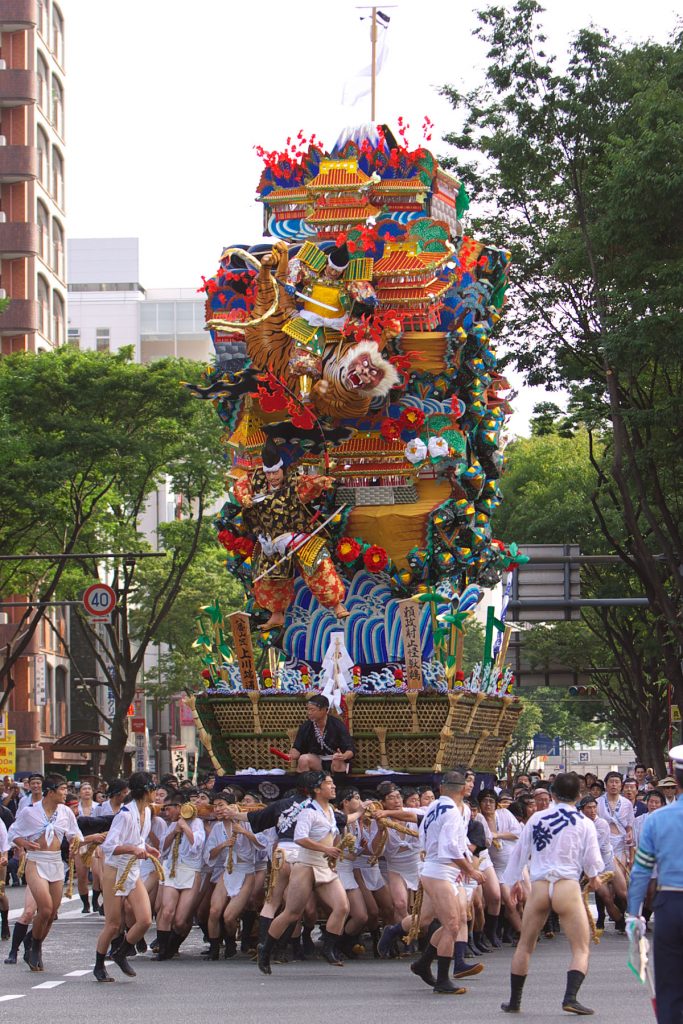
This festival is one of the biggest festivals in Kyushu. It’s said to have originated back in the 12th century, when a Buddhist priest sprinkled holy water around the region to get rid of a terrible plague. You will be able to witness two types of yamakasa (floats): the kazariyama (decorative floats), and the kakiyama (carried floats).
- Dates: 1st – 15th July
Tenjin Jinja, Osaka
This festival is in fact one of Japan’s three biggest festivals. It lasts over two days, and during this period, there is a major drumming performance and a massive lion dance performance. It culminates on the second day in the afternoon when there is a drum-led procession from Tenmangu Shrine to Tenjin bridge. From there, the procession will continue with 100 decorated boats across the river
- Dates: 24 – 25 July
Tanukidani Fudoin Fire Festival, Kyoto
A fire festival held right in the middle of summer in Kyoto! Towards the end of July, you can witness yamabushi mountain priests within the Higashiyama mountain region prepare a massive fire display from pine branches. They will then walk across the burning ashes.
Note: they walk across the ashes, not the actual fire. Visitors are then welcomed to also walk across the ashes if they wish. The point of this is to draw out any ailments and sickness in the body into the ashes.
- Dates: 28 July
Sumida River Fireworks Display, Tokyo

Literally a festival that’s dedicated to awesome fireworks displays. Originating all the way back to the Edo times, firework artists around the country will come here during this festival to show off their tricks and skills.
- Dates: 27 July
Japan Matsuri Festivals – August
Aomori Nebuta Matsuri, Aomori
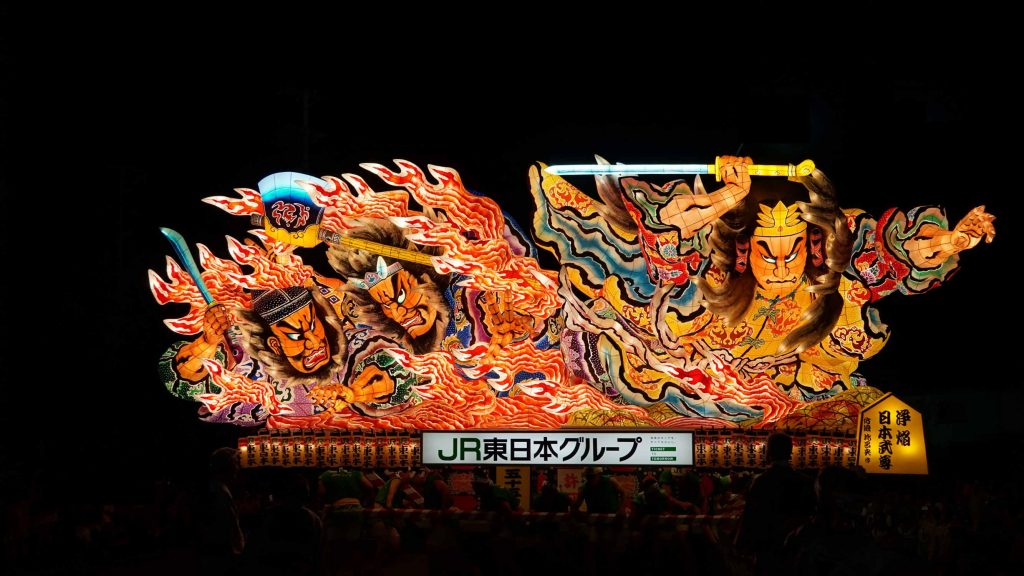
This is one of the most incredible display of floats, taiko drumming, dancing, and music you will ever witness. This legendary festival happens during the first week of August. During the week, you can witness a parade of about sixty or so lanterns that have been created into the shapes that are or represent historical and legendary figures.
These ‘lanterns’ range from being small enough to be carried by small children, to being several metres wide and having to be carried through by floats. All participants are dressed in colourful and fun costumes who dance to taiko drums and flutes and chant whilst they make their way through the streets.
The best part of this festival is that anyone can join in on the festivities and dancing as long as they’re wearing a Haneto dancer costume (can be purchased at local stores nearby).
- Dates: 2 – 7 August
Kanto Matsuri, Akita
This is one of the three biggest festivals in Tohoku. Its claim to fame lays within the impressive 10 metre tall bamboo poles which each hang 46 bright yellow lanterns. For the duration of the festival, you will witness young men balance these poles on all parts of their bodies – you’ll definitely see some on their shoulders and foreheads, but the more creative ones go for their hips and some even try to balance it on their chins!
- Dates: 3 – 6 August
Tanabata Matsuri, Miyagi

This is yet another festival which celebrates and prays for good harvest, only this time it’s located in Sendai. This ‘Star Festival’ is one of the three great festivals across the entire Tohoku Region because of the renowned beauty of the colourful and gorgeous Tanabata decorations all around central Sendai and neighbouring districts.
- Dates: 6 – 8 August
Awa Odori, Tokushima
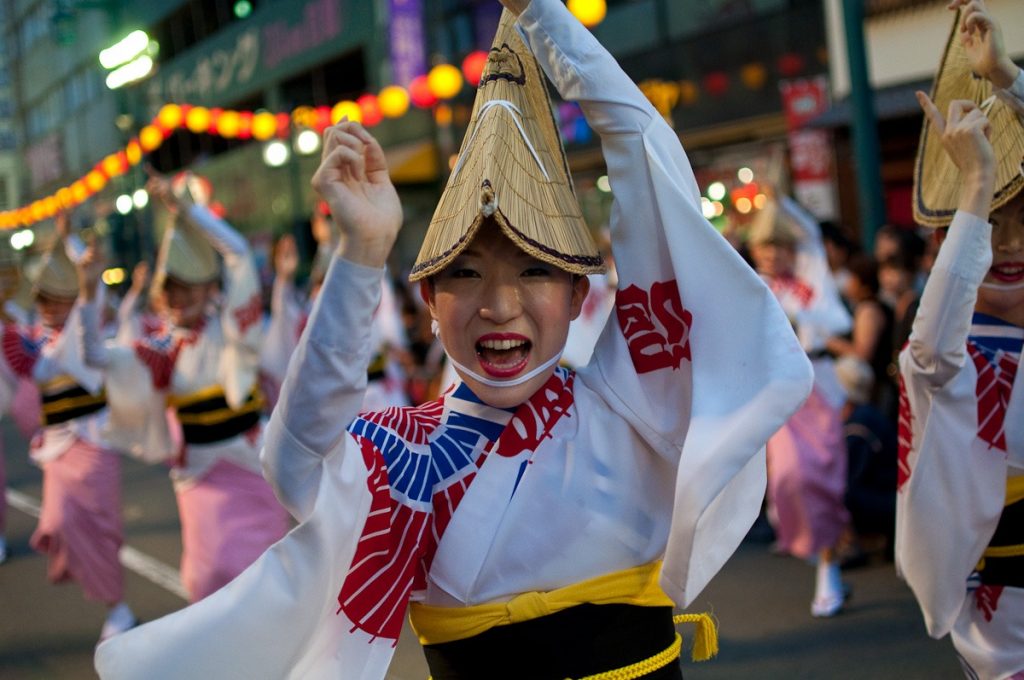
This bright and colourful festival is a popular festival that features hundreds of dancers who compete with each other in performances across the multiple stages in Tokushima City.
The costumes are incredibly eye-catching, and the music is mesmerising. The performances begin in the afternoon around 6:00pm, and across all stages, you will be able to find seats that are free, otherwise there are reserved seats which can be paid for.
- Dates: 12 – 15 Aug
Japan Matsuri Festivals – September
Kitazawa Hachiman Festival, Shimokitazawa
Within the small hipster suburb of Shimokitazawa in Tokyo, the annual Kitazawa Hachiman Matsuri is held. During this week, the shrine grounds are full of loud cheers and celebrations, with lavishly decorated shrines being parade around the neighbourhood. Whilst it’s not near the scale of many other festivals, it’s still a great way to interact with other festival-goers and get a feel for the matsuri-life in Japan.
- Dates: First week of September
Karasu-Zumo, Kyoto
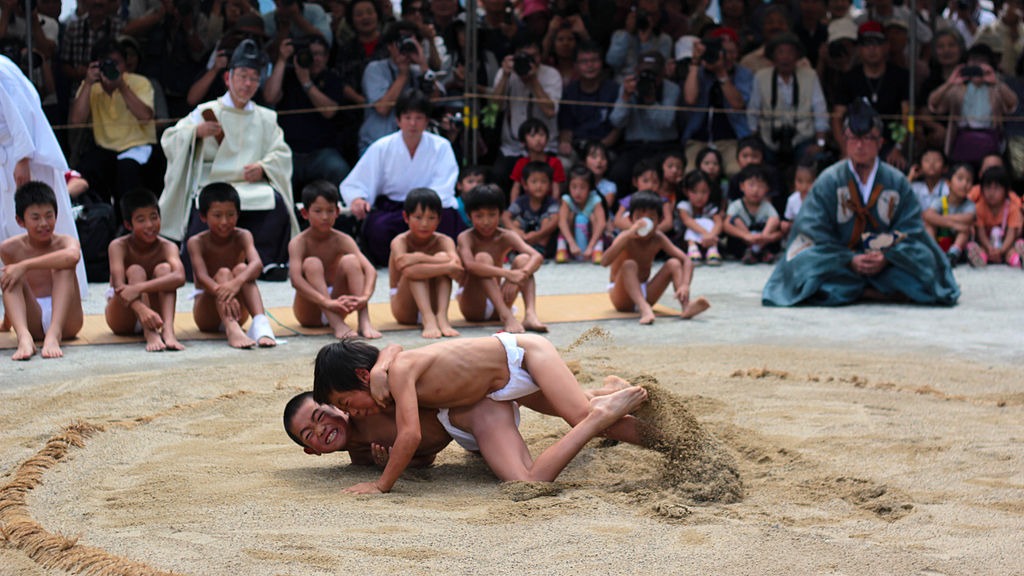
This unique festival consists of Shinto priests performing a unique ritual in which they imitate a crow hopping from side to side whilst calling out noises such as “kaa-kaa-kaa” and “koo-koo-koo”. These chants are repeated twice more, as it is believed that repeated odd numbers drive away evil spirits. It is then followed by children splitting into two teams and displaying a sumo wrestling competition.
- Dates: 9 September
Kishiwada Danjiri Matsuri, Osaka

This festival is one of the most exciting matsuris to happen in Osaka. It basically showcases over thirty four-metre (or taller!) floats which are transported at top speed throughout the streets of Kishiwada. And by top speed, we actually mean stampeded through the small streets by hundreds of locals!
Yes, there is a degree of danger is safety is not always guaranteed for participants, but as a viewer you won’t be able to tear your eyes away from the madness. This event draws hundreds of people to the crowd.
- Dates: Mid September
Japan Matsuri Festivals – October
Nada no Kenka Matsuri, Himeji

This festival is one that has it all, from glorious floats to loud music, from to colourful costumes to insane dance performances, and last but not least, fighting. On the first day, you will see the floats which represent the seven districts of Himeji paraded. On the second day, the representatives of each region will carry these floats to Otabi Mountain and fight each other. It’s believed that this festival will result in good harvest and fortune for the region.
- Dates: 14 – 15 October
Jidai Matsuri, Kyoto

On the anniversary of the foundation of Kyoto, this festival occurs. It is a Japanese festival “of ages”, and represents a timeline. You will be able to witness the participants dressed in costumes and clothing from almost every distinct period in Japanese history – a wonderful sight to see!
The parade of costumes will take more than two hours to watch the entire thing, but if you have the time, we recommend you stay as it’s not everyday you get to witness someone dressed as a Japanese royal from the 1600s!
- Dates: 22 October
Naha Ohtsunahiki Festival, Naha
This western island in Japan hosts this lively annual festival in October every year, where many live performances can be enjoyed out in the open, and local food fare can be sampled all day and all night long.
However, the draw of this even is the actual ohtsunahiki, or the tug-of-war event, which involves a long rope, 1.5 metres in diameter, weighing around 27 tonnes, being tugged by hundreds of competitors. Join thousands of other onlookers as this exciting event happens!
- Dates: Second weekend in October to the Monday
Japan Matsuri Festivals – November
Asakusa Tori-no-ichi Fair, Tokyo

Tori-no-ichi is actually a national-wide type festival has held to celebrate shrines and temples across Japan. Its origin dates back to the Edo period, and is usually held in November during the days that have been denoted as the rooster days. In Asakusa, this festival is particularly big! It’s concurrently held across two venues: Chokokuji Temple and Otori Shrine, and includes vendor stalls selling special items such as gold and silver ‘kumade’ (wide rakes made of bamboo), which is believed to bring the household good luck.
- Dates: (around) 8 and 20 November
Karatsu Kunchi, Saga

This stunning autumn festival is one of the largest in the Kyushu region, and features 14 massive, lavishly designed traditional wooden floats made from washi paper, linen and wood, which is then covered in lacquer and finished off with gold and silver paint. These floats are often quite inventive, and have drawn major crowds, both locals and tourists, over the years. The event culminates on the 3rd of November, when all 14 floats are paraded through the city to Otabisho Shinko.
- Dates: 2 – 4 November
Japan Matsuri Festivals – December
Chichibu Yomatsuri, Chichibu Shrine
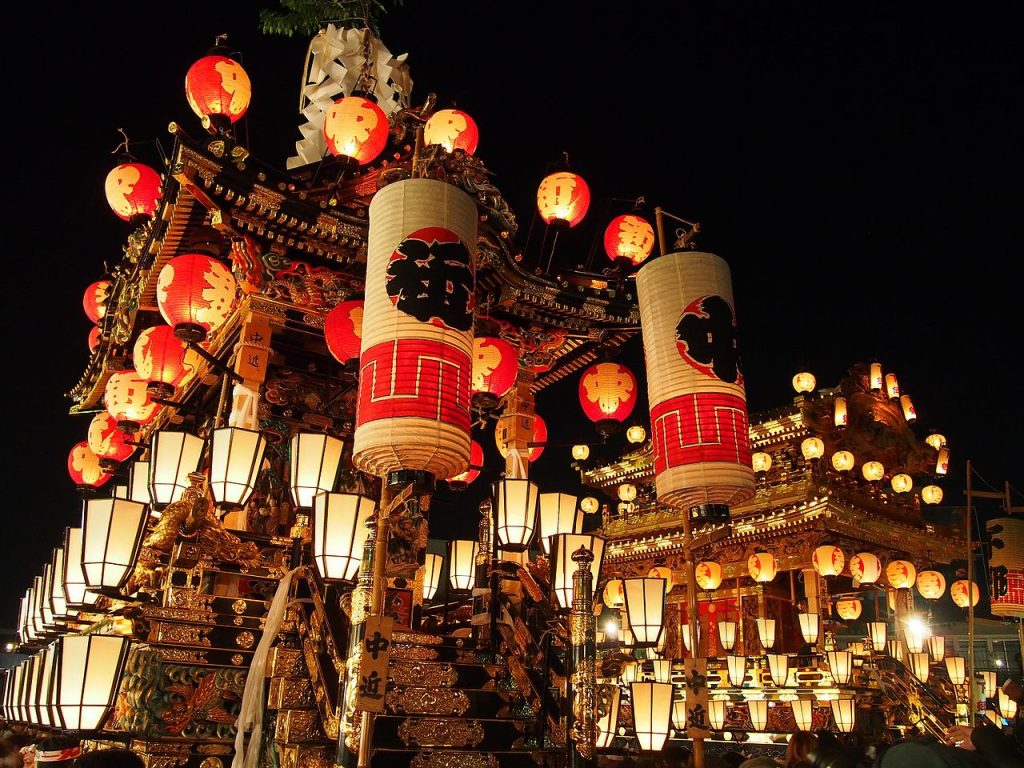
This is a wonderful festival that’s close by to Tokyo so you don’t have to travel extensively if you’re in the big city in December! It’s a festival that features elaborately adorned floats that rival the impressive beauty and size of Gion Matsuri and Takayama Matsuri. The parade is not the only thing to look forward to, however. The other major attraction of the Chichibu Yomatsuri is the fireworks display that actually lasts for just under two and a half hours!
- Dates: 2-3 December
Sanpoji Daikon Matsuri, Narutaki
This is a unique festival dedicated to radish because…why not?! Radish is a root vegetable that becomes readily available in late autumn and is often used in many Japanese winter dishes. The festival itself entails thousands of people being served boiled radish over two days at Kyoto’s Sanpoji Temple. It is believed that consuming radish is good for your health.
- Dates: 9 – 10 December
Akutai Cursing Matsuri, Atago Shrine (Ibaraki)
The annual Akutai Cursing Festival is a festival where you’re actually allowed to drop the f-bomb. How crazy! On this day, anyone and everyone is allowed to cuss in any language. This festival started back during the Edo Period as a form of stress relief for overworked people in the textiles industry. During the celebrations, you will witness thirteen people dressed as tengu (demons) leading hundreds of people through the streets as the crowd hurls curses and vent out their frustration at them. The most common swear words used as “bakayaro” (idiot), and “konoyaro” (bastard).
- Dates: 31 December
Phew! That was probably a long and tiring but awesome read. Who knew there were so many things to celebrate? And mind you, we’ve only skimmed the tip of the iceberg! In fact, there are literally hundreds more festivals that are celebrated across the country during all times of the year in the smaller villages that you just might stumble across if you’re in the right place at the right time. As with most foreigners attending festivals, please maintain a respective behavior amongst the locals. However, don’t be afraid to have a little fun and join in on the festivities, especially if they’re hyping up the crowd!
Thank you for reading this blog post until the end. If you want more useful info about Japan, check this out: Japan Travel Tips.
